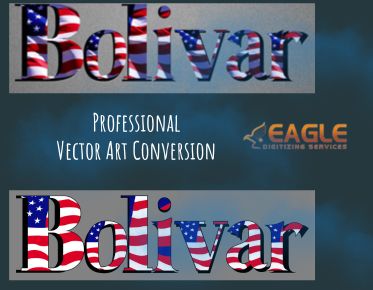From Thread to Tech: Start Embroidery Digitizing With These Simple Steps
Embroiderydigitizing is where artistry meets precision, transforming intricate designs into
stitch-ready digital files. It’s the gateway to bringing illustrations to life
with thread, adding texture and personality to the fabric. This creative
practice doesn’t just replicate images—it translates them into a tactile,
layered masterpiece.
Why Learn Embroidery Digitizing? Benefits and Creative Freedom
Embarking on the
journey of embroidery digitizing offers unparalleled creative freedom. It
empowers you to customize designs down to the last stitch, creating unique,
personalized pieces for clients, gifts, or your own projects. Whether launching
a small business or enhancing your DIY craft arsenal, digitizing bridges the
gap between imagination and tangible art. Plus, it opens the door to
higher-quality, custom embroidery that doesn’t rely on pre-made patterns.
Getting Started: What You’ll Need for Embroidery Digitizing
Essential
Tools: Computer, Software, and Equipment
To start, you’ll
need a reliable computer equipped with digitizing software—think of it as your
digital sketchpad. While high-end machines provide faster processing and
smoother operation, most standard computers can handle digitizing software
without a hitch. A quality embroidery machine isn’t strictly necessary for
beginners but becomes essential as you progress, transforming your designs from
screen to fabric seamlessly.
Choosing
the Right Software: Options for Every Skill Level
Software
selection can feel overwhelming, ranging from beginner-friendly platforms like
Hatch Embroidery to professional-grade programs like Wilcom and Brother
PE-Design. For those just testing the waters, free tools like Ink/Stitch (an
extension of Inkscape) can help familiarize you with basic concepts before
investing in more robust software.
Embroidery
Machines: Do You Need One to Start?
While a machine
isn’t a must-have for learning to digitize, owning one allows you to test your
designs and refine your skills in real time. Entry-level embroidery machines like Brother SE600 offer a good starting
point, balancing affordability with functionality. Machines with higher stitch
counts and precision features can elevate your work as you advance.
Understanding the Basics of Digitizing Software
Key
Features of Digitizing Software: What to Look For
Digitizing
software should be both intuitive and powerful, with essential features such as
auto-digitizing tools, manual stitch creation, and editing capabilities. The
ability to import various file types and access libraries of stitch patterns
also enhances workflow flexibility.
The
Learning Curve: Navigating Menus, Tools, and Settings
Every digitizing
program comes with a learning curve. Familiarize yourself with the menu layout,
tool icons, and basic settings. It’s like learning to navigate a new art
studio, with your digital tools being the brushes, inks, and palettes.
Free
vs. Paid Software: Finding What Works for Your Budget
Free programs
like Ink/Stitch provide a solid introduction to digitizing but often come with
limited features. Investing in paid software can unlock advanced capabilities
like 3D stitch previews, fine-tuned density adjustments, and sophisticated
editing tools. To establish the ideal balance, evaluate your demands and
financial situation.
Setting Up Your Workspace for Smooth Digitizing
Organizing
Your Digital Workspace: Software, Files, and More
A clutter-free
workspace leads to smoother projects. Organize your software interface by
customizing toolbars and shortcuts for quick access. Create a systematic folder
structure on your computer to keep track of design files, templates, and
exported formats.
Ergonomics
Matter: Comfort Tips for Long Digitizing Sessions
Digitizing can
require hours of meticulous work. Invest in a workstation and chair arrangement
that promotes proper posture. Adjustable screen stands and wrist rests can
reduce strain, making lengthy sessions more comfortable and productive.
Essential
File Types for Embroidery: Understanding DST, PES, and Others
Different
embroidery machines read different file formats, so understanding these is
crucial. The DST format, a universal standard, is compatible with many machines
but may not include color information. The PES format is often used for Brother
machines and retains more design details. Always export your work in the
correct file format to ensure smooth machine compatibility.
Basic Embroidery Design Principles
Stitch
Types Explained: Satin, Fill, and Running Stitches
Each stitch type
serves a unique purpose. Satin stitches create sleek, raised lines perfect for
borders and text, while fill stitches cover larger areas with a balanced
texture. Running stitches, on the other hand, are lightweight and ideal for
outlining or detailing.
Understanding
Density: How Tight Should Your Stitches Be?
Density refers to
how close the stitches are to each other. Too dense, and your fabric may
pucker; too sparse, and your design might look thin or uneven. A design that is
both aesthetically pleasing and structurally sound is guaranteed when the
proper balance is struck.
Setting
Stitch Angles for Best Results: What to Consider
Stitch angles
play a crucial role in how light hits your embroidery, impacting its
dimensionality. Adjusting the stitch angle can emphasize certain parts of your
design, making them pop with a subtle shift in shading and texture.
Digitizing Fundamentals: Converting Images to Embroidery Designs
Choosing
the Right Image to Digitize: Complexity and Detail
Not all images
translate well into embroidery. Opt for clear, high-contrast images with
defined edges and simple color schemes. Highly detailed images may require
strategic simplification for optimal results.
Vector
vs. Raster Images: What’s the Difference in Digitizing?
Vector images,
made up of scalable paths, provide the best base for digitizing because they
don’t lose quality when resized. Raster images, composed of pixels, can become
blurry when enlarged, complicating the digitizing process.
Resizing
and Adjusting Images: Getting the Right Proportions
Before
digitizing, ensure your image fits within the embroidery frame size. Scale the
image while maintaining its proportions to avoid distortion. Use your
software’s built-in tools to adjust and position the design for a perfect fit.
Starting Your First Project: Step-by-Step Digitizing Guide
Importing
Your Image into the Software
Begin by
importing your chosen image into the software. Adjust its position on the
canvas and lock it in place as a reference layer.
Outlining
Your Design: Creating Paths and Borders
Trace the image
outlines using the software’s path or line tool. This step sets the framework
for the main stitch types and ensures each section is clearly defined.
Filling
in Details: Using Stitches to Build Texture
Once your design
is outlined, fill in the spaces with appropriate stitches. Use satin for crisp
details and fill stitches for broad areas. Adjust the stitch direction to
create a sense of depth and flow.
Working with Different Stitch Types: Adding Variety to Your Design
When
to Use Satin Stitches for Borders and Details
Satin stitches
are best for bold, eye-catching details like lettering or intricate outlines.
Their reflective quality adds a touch of sophistication to any design.
Using
Fill Stitches for Larger Areas: Tips for Smooth Coverage
For larger areas,
fill stitches offer even coverage. Adjust the pattern and angle to avoid
monotonous textures and introduce subtle shading effects.
Running
Stitches for Lines and Outlines: When and How
Running stitches
are efficient for outlines and minimalist designs. They use less thread and
create a clean, linear effect, perfect for delicate details or underlays.
Mastering Stitch Density and Tension
Finding the Right Density for
Different Fabrics
Denser stitches
work well on durable fabrics like denim, while lighter densities are better
suited for delicate materials. Test your settings on fabric scraps to find the
ideal density.
Adjusting Tension to Prevent
Puckering and Thread Breaks
Machine tension
plays a vital role in stitch quality. If your stitches look too tight or the
fabric puckers, loosen the top thread tension. For looser, sagging stitches,
tighten them incrementally.
Balancing Density with Design
Complexity
More intricate
designs may require adjustments in density to maintain fabric integrity.
Balance heavy stitch areas with lighter elements to avoid overloading any part
of the fabric.
Adding Dimension and Texture: Layering Techniques
Using
Stitch Layers for Depth and Realism
Layering stitches
can add a multi-dimensional feel to your embroidery. Start with base layers
using light densities and build up with more detailed stitches.
Techniques
for Shading and Gradient Effects
Shading can be
achieved by gradually changing stitch density or layering colors. This
technique mimics natural light and adds a sophisticated touch to your designs.
Combining
Stitch Types for Unique Textures
Mixing satin,
fill, and running stitches in a single design creates varied textures that make
the final product more engaging. Experiment to find combinations that best fit
your aesthetic goals.
Optimizing Your Design for Different Fabrics
Matching
Stitch Density to Fabric Type
Each fabric has
unique properties that affect how it holds stitches. Heavier fabrics can
support denser embroidery, while lightweight or stretchy materials require a
gentler approach.
Embroidering
on Stretchy vs. Stiff Fabrics
Stretchy fabrics
need stabilizers to hold the design without distortion. Stiff fabrics are
easier to work with but may require tension adjustments to avoid needle
deflection.
Tips
for Working with Delicate Fabrics
For delicate
fabrics like silk, opt for fine needles and lower stitch densities. Adding a
water-soluble stabilizer on top can also prevent the stitches from sinking into
the fabric.
Previewing and Editing Your Design
Simulating
Your Design: How to Preview Embroidery Results
Many digitizing
programs offer a preview or simulation feature. Use this to check for potential
issues like misaligned stitches or unwanted gaps before hitting the ‘Export’
button.
Common
Issues and Fixes: What to Look For in the Preview
Watch for uneven
stitch distribution, overlaps, and inconsistent angles. Correct these issues by
tweaking stitch paths or adjusting density.
Making
Edits and Refinements Before Saving
Fine-tune your
design by zooming in on details. Make minor adjustments to stitch directions or
overlaps to enhance the final output’s quality.
Saving and Exporting Your Design for Embroidery Machines
Understanding
Different File Formats for Various Machines
Fileformats like DST, PES, and EXP are specific to different machine brands. Ensure you save
your design in a format compatible with your machine to avoid data transfer
issues.
How
to Export Correctly to Avoid Compatibility Issues
Double-check your
software’s export settings to align with your machine’s requirements. Test your
file on a sample run to confirm it loads and stitches correctly.
Organizing
Your Files: Tips for Building a Digital Library
Create folders by
project type, customer, or stitch file format. Regular backups can protect your
library and save you from starting over after unexpected data losses.
Preparing Your Machine and Fabric for Embroidery
Setting
Up Your Machine for the First Run
Load your design
file into the machine and double-check thread colors and sequence settings.
Thread your machine carefully and make sure the bobbin is wound properly.
Preparing
Fabric: Hooping, Stabilizers, and More
Hooping fabric
tightly but without stretching ensures precise embroidery. Choose stabilizers
based on fabric type—cut-away for durability or tear-away for quick, clean
results.
Thread
Selection Tips for Consistent Results
Select threads
that complement your design’s texture and color palette. High-quality
embroidery threads reduce the risk of breakage and provide consistent results.
Running a Test Stitch-Out: Why It’s Important
Importance
of Testing: Avoiding Mistakes in the Final Product
A test stitch-out
is invaluable for catching errors before they end up on your final piece. It
helps spot issues that may not appear in the software simulation.
Evaluating
Your Test Results: What to Check For
Inspect the test
piece for skipped stitches, puckering, or misalignment. Note where adjustments
are needed and refine your design accordingly.
Making
Final Adjustments Based on Your Test
If any issues
arise, tweak your design’s stitch density, tension settings, or angles. Once
satisfied, you’re ready for the real run.
Embroiderydigitizing is as much an art as it is a skill. Each project refines your technique, pushing you closer to mastering the craft. Embrace the process, experiment boldly, and watch as your digital designs turn into beautiful, tangible pieces of art.



